If you're looking for an easy vegan meal that's both grounding and detoxifying, look no further than kitchari. It is a simple dish made with rice, beans, and spices, and it's perfect for a busy weeknight. Plus, this vegan kitchari recipe is a great way to detox your body! You can customize your kitchari by adding different spices or herbs. Here's my favorite recipe. Enjoy!

Have you ever heard about Kitchari cleansing? I hadn’t, but I dogged in and loved the concept as the good researcher I am. This recipe encompasses all the Vegan Kitchari Recipe preparation basics, a great main dish for detox periods.
Our Ayurveda Lifestyle friends contacted us to develop a Kitchari Detox menu for their yoga students making a Kitchari Cleansing at their Yoga Academy.
According to the Ayurveda practice, the cleanse involves juicing and eating in a certain way for the detox duration to cleanse the gut and release the body from inflammation. By the way, we are taking part in the detox!
The idea was to develop a meal plan, including breakfast, lunch, and a light dinner, typically including juice detox, legumes, cereal-based kitchari recipe (Also known as kitcheree recipe), and soup. All are making part of a perfect kitchari bar menu!
Try also our Superfood Green Detox Smoothie on this site to complement your weekly breakfast meal plan.
Jump to:
💚 Why you will love it
- Easy to digest
- Nutrient-rich ingredients
- Comforting and warming
- Quick preparation time
- Versatile meal options
🧾 Ingredients

I will go one by one because I think the exercise is worth the reading. Moreover, we will explore what each ingredient contributes to the detox.
Rice and Bean base
Mung beans are easier to digest than all the legumes, making them perfect as a post-illness food option and work great for vegan stews.
Mung beans are ideal because they are high in fiber and low in calories. They are safe to eat for people with diabetes because their glycemic load is low. These green pearls also help to regulate blood sugar.
The carbs present in mung beans are digested better than the rest of the legumes, making them optimal for a cleansing period, where some changes are also taking place within our bodies and souls.
You can also find them in their yellow mung daal form. These ones are even easier to digest.
Rice – we all have been given a plain rice bowl when our stomach feels a little funny. Whole bran rice is an essential source of insoluble fiber (dietary fiber) that we humans cannot completely break down entirely. This fiber prevents constipation and colon cancer. Rice is naturally gluten-free, making it safe for people who have gluten gut irritation issues.
Seasoning
Turmeric powder
The curcumin component in turmeric helps fight inflammation and improves the strength of our immune system.
See how to include more turmeric in your diet with this morning tonic, a lemon, turmeric, and ginger anti-inflammatory tea.
Ginger root
It is an excellent anti-inflammatory as it helps in two ways. One is locally reducing inflammation, stabilizing the white globules to release less inflammatory signals. You can alternatively use ginger powder.
Sesame oil
The linoleic acid of this oil is also antioxidant, anti-bacterial, and anti-inflammatory. Sesame oil is especially advantageous for pacifying Vata dosha. This oil prevents the skin from getting excessively dry. I recommend you go easy on it, as it has a strong flavor.
The Traditional Ayurvedic recipe uses Ghee (clarified butter) instead of sesame oil, but we are making a Vegan Kitchari Recipe. If you are vegetarian or omnivore, you may choose to use Ghee instead of sesame oil, as although it is not dairy-free, it has a minimal amount of lactose, which we know a lot of people are intolerant to.
I once read a text I found very interesting:
“You are not lactose intolerant; you are just not a baby cow.”
Since sesame oil is also part of an Ayurvedic diet, we chose to take the vegan path to replace Ghee for this recipe.
Other alternatives are coconut oil and avocado oil.
Seeds
Cumin Seeds
These delicious digestive seeds are considered a cooling spice in Ayurvedic medicine. They also aid digestion and help flush toxins out of the body.
Cumin is very versatile. You can use it either ground or as whole seeds. It can be consumed raw, dry-roasted, sautéed, or roasted. In this recipe, we will slightly sauté cumin seeds to bring their flavor and aroma to life.
Although cumin has a strong flavor, it is well-suited to combine with many other spices, including turmeric, coriander, ginger, fennel, and cinnamon.
Black pepper
This well-known spice activates curcumin’s properties. It also has anti-inflammatory benefits on its own, along with many other benefits such as helping to control blood sugar levels, lowering cholesterol levels, and great benefits for our brains.
Coriander Seeds (powdered)
Coriander helps prevent flatulence and controls spasmodic pain. It also boosts the digestive system in hot seasons when digestion seems to be weaker. Coriander seed is a digestive aid and diuretic. Although the leaves (fresh cilantro) are cooling, the seeds are slightly warming spices. Its bitterness reduces pitta, while its pungency improves digestion.
An Ayurvedic spice mix is a mix of herbs and spices that accompany the cleansing process to enhance metabolism and digestion. It helps prevent digestive issues and cleanses ama from the body.
Turmeric, cumin, coriander, fennel, mint, asafetida, black pepper, dried powdered ginger, cardamom, cinnamon, nutmeg, and cayenne are potent Ayurvedic spices that contribute to enhancing metabolism and digestion.
They also cleanse ama (undigested food that gets absorbed into our system without properly being assimilated by our bodies) and help prevent digestive disorders such as gas and bloating.
🔪 Instructions
How to Make Kitchari Recipe: Gut Healing & Anti-Inflammatory. This basmati rice and moong dal recipe is quickly put together, is a delicious dish, and is ideal for meal prep.
- Soak. Add the rice and moong dal; then pour water until it is covered. Let the mix soak for 15 minutes.
- Briefly cook spices. Warm the sesame oil on medium-low heat in a medium or large pot. Then add cumin seeds and let them cook for about a minute until they become fragrant and brown.
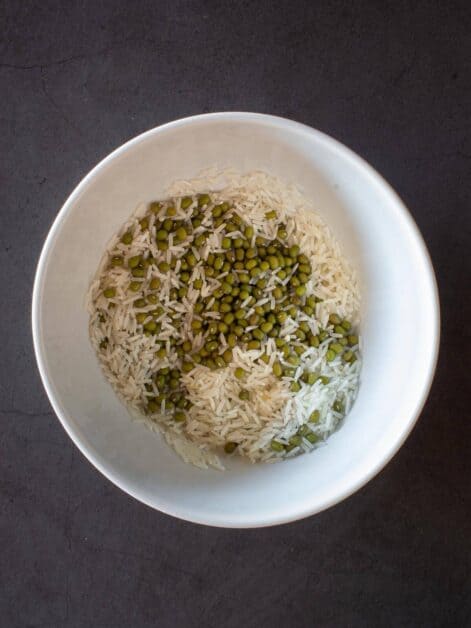
Step 1: combine rice and beans in a saucepan.
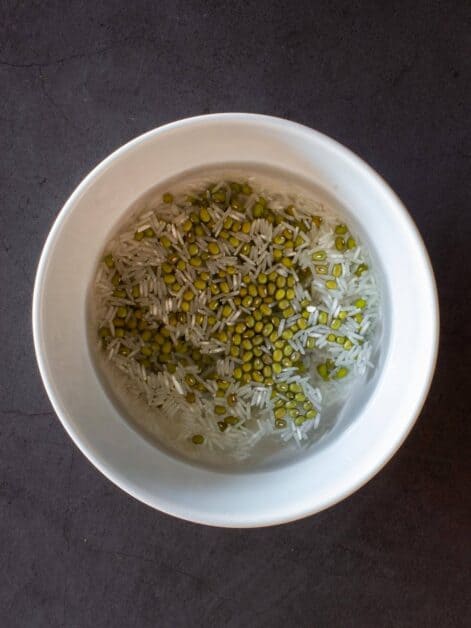
Step 2: soak the grains for 15 minutes to ensure they cook easily.
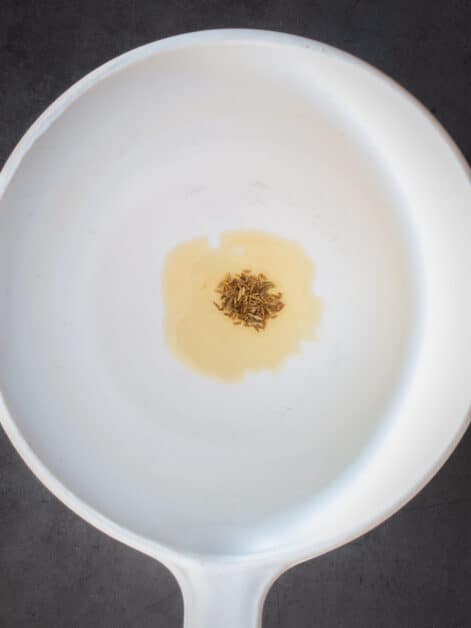
Step 3: stir fry the cumin seeds in sesame oil until fragrant.
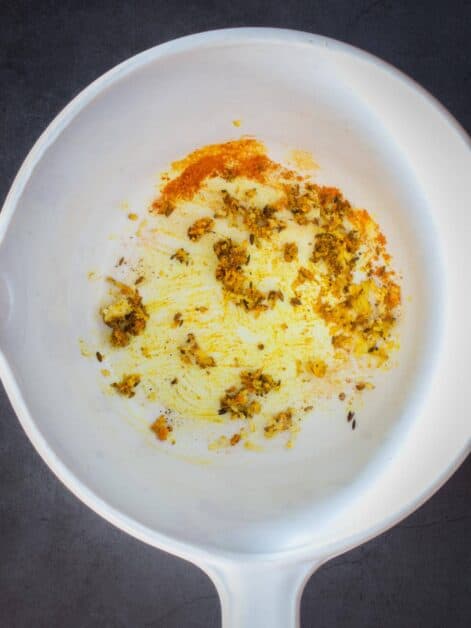
Step 4: Add fresh ginger, ground coriander, turmeric, and black pepper while stirring. If you used ground cumin instead of cumin seeds, add it now.
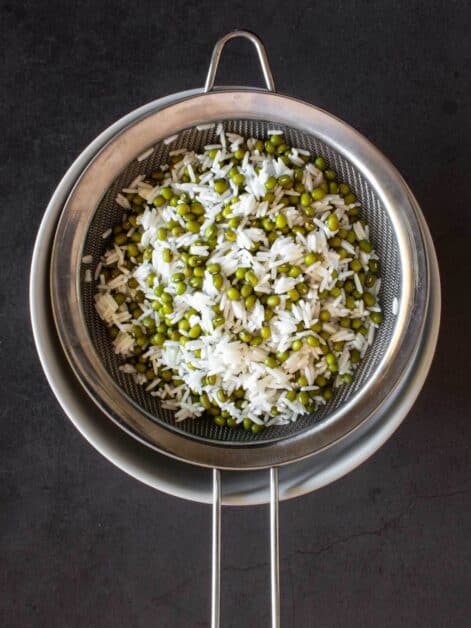
Step 5: Strain the rice and mung beans and add them to the saucepan. Stir and add the water or vegetable broth.
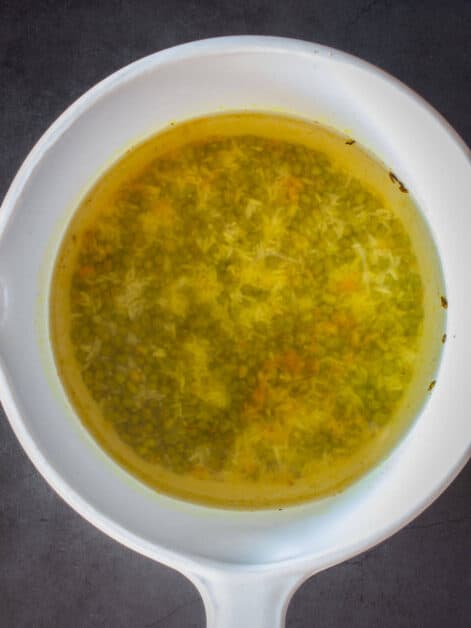
Step 6: Increase the heat to medium-high, bringing the mixture to a boil. Then, turn the heat down to a gentle simmer and let it cook for 30 minutes, uncovered.

Step 7: Stir occasionally until you get to your desired consistency. Usually, kitchari is eaten as creamy pure comfort food.

Step 8: You can immediately serve it with coriander or mint leaves or cool it down to store in the fridge. Feel free to squeeze some lemon juice and fresh cilantro on top.
Garnish. Serve with your favorite sprouts on top.
It makes a great fall season recipe, as it is cozy and flavorful. Legumes are great for providing energy during the cold seasons, and ginger boosts our immune systems.
💡 Expert tips
When preparing kitchari, opt for split yellow mung dal and basmati rice. Rinse these thoroughly before cooking to remove impurities and excess starch. This step is crucial for achieving the right texture and flavor in your kitchari.
Use a heavy-bottomed pot for cooking kitchari. It distributes heat more evenly, preventing the bottom from burning while ensuring all ingredients cook simultaneously.
Adjust the water ratio according to your desired consistency. Some prefer their kitchari more soup-like, while others like it thick and porridge-like. Start with a 4:1 water-to-rice-and-lentils ratio and adjust as needed.
Don't skimp on the spices. They're pivotal for flavor and digestive and healing properties. If you're new to these spices, start with smaller amounts and adjust according to your taste preferences.
Experiment with seasonal vegetables to add variety and nutritional value to your kitchari. Adding veggies can turn it into a more complete meal, providing a good balance of macronutrients and enhancing its detoxifying benefits.
📖 Variations
We tried and tested different spice options for kitchari. We picked the minimal spice mix for the base kitchari recipe and explored adding some optional ingredients that are also recommended but are not “mandatory.” They came out equally delicious, which is a great way to scale it up.
Base variations: cereals and grains
Oats
These cheap flakes are powerhouses. They help keep our cholesterol levels low, fat, and high in dietary fiber. You would rarely feel constipated if these friends were part of your routine. We are used to eating oats only during breakfast, as part an oats and chia pudding, or porridge. Still, they are a great kitchen partner to absorb humidity without changing the flavor of meals and improving the dish’s nutritional value; that is how we used them on this eggplant vegan eggplant pie or this savory carrot tart.
Oats are also great for making plant milk in minutes. They are by far the cheapest and most sustainable vegetable milk.
Brown Basmati Rice
You can use brown rice instead of white basmati rice; it will just take longer to cook, and the beans will become more of a porridge consistency, which is OK because the idea of a Kitchari is to make it as easy to digest as possible.
Lentils and peas
This super healthy and protein-packed legume is considered the second most manageable to digest after split mung beans. You can use any kind of lentil, such as red lentils (our favorite), in place of mung beans.
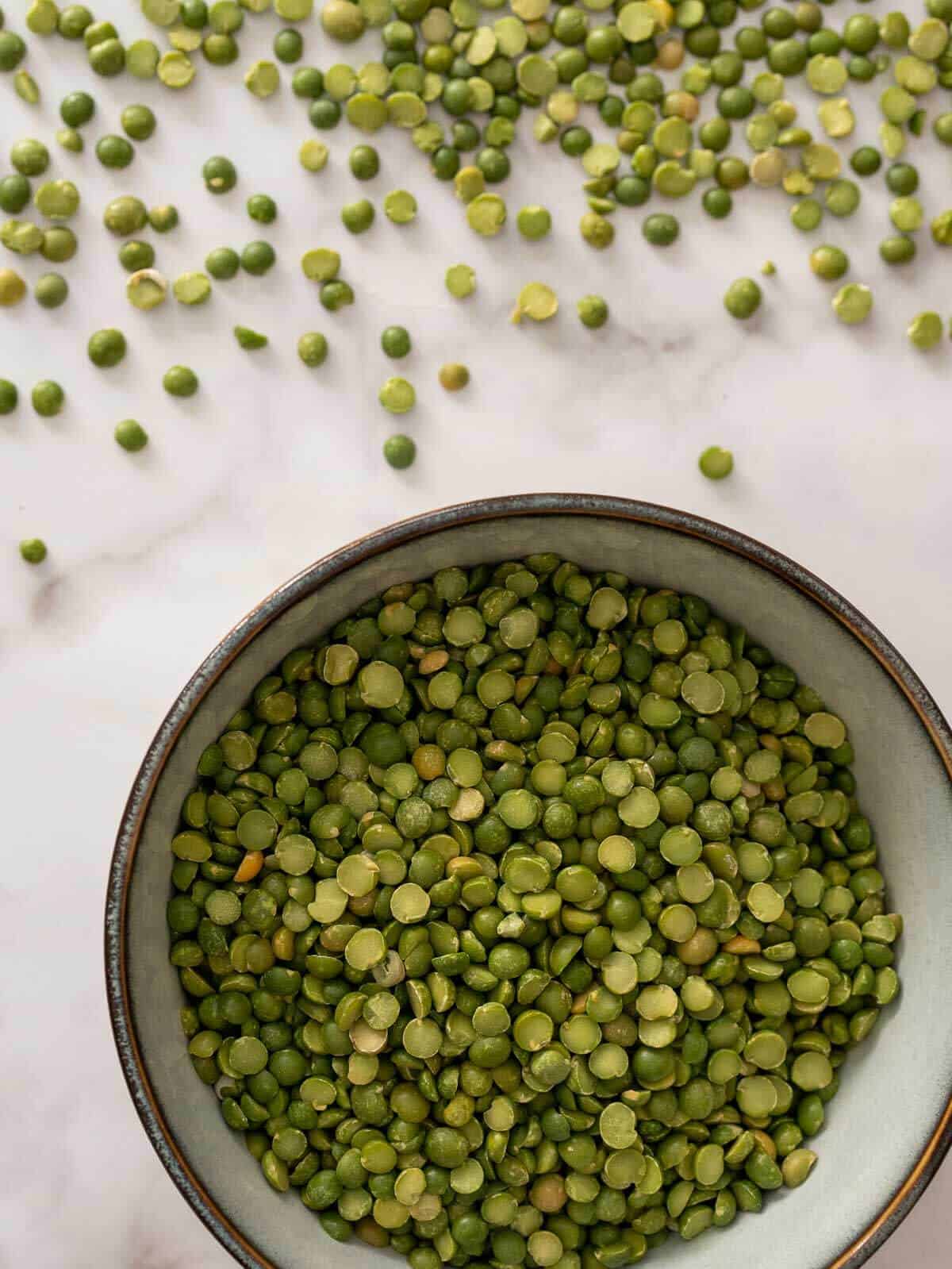
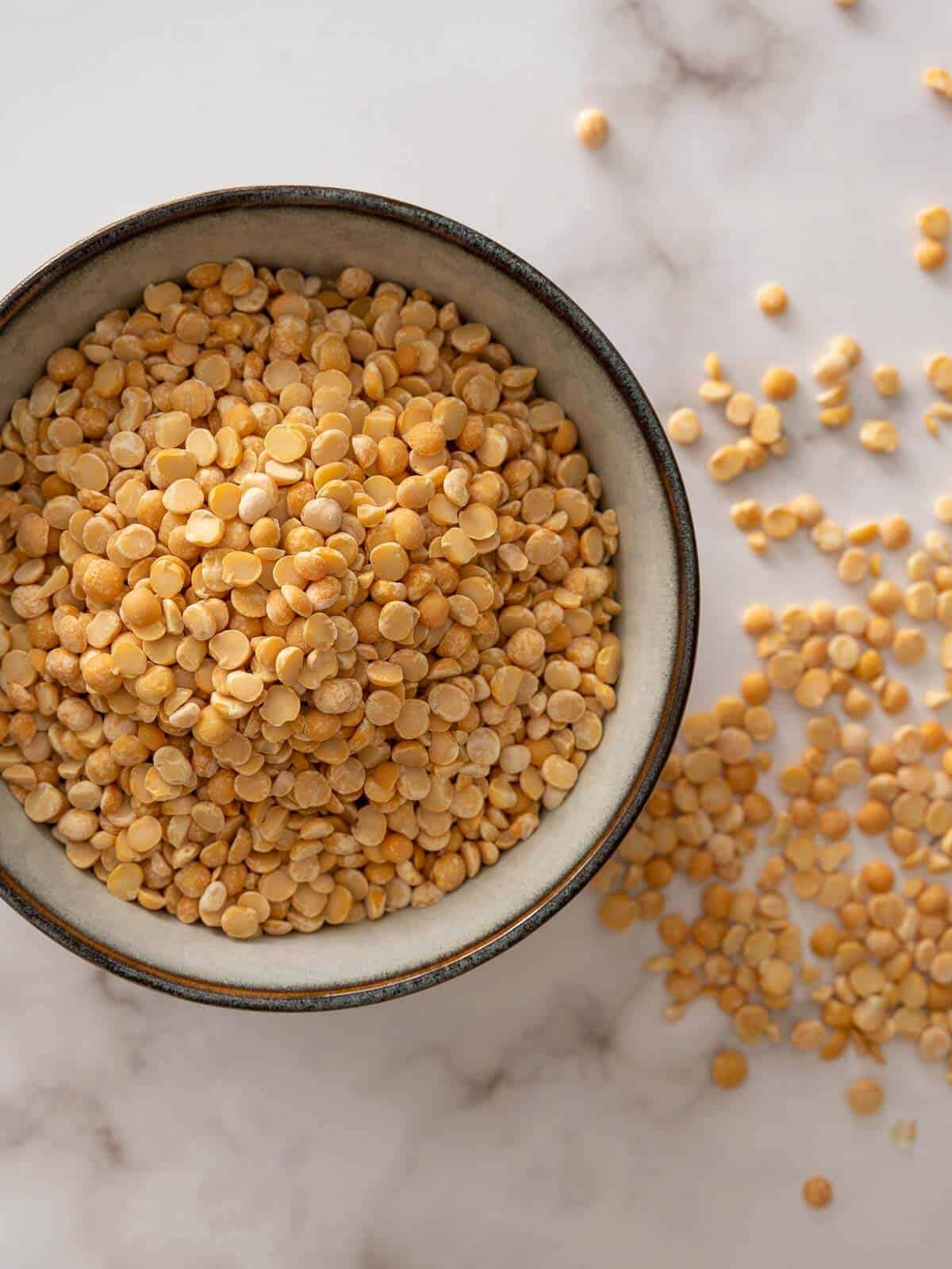
If you go for red lentils, you will save about 15 minutes, as they only need to be soaked briefly and only need to be cooked for about 15 minutes.
See our green pea pottage for a delicious and wholesome vegan meal.
Moong or Mung Beans (Mung dal)
Use yellow split moong beans (moong daal) to make the kitchari faster and easier to digest.
Other ayurvedic cleanse spices and herbs
Mint
This herb is a natural coolant. It has a sweet and intense aftertaste. Mint is great for digestion and can pacify all three doshas. Mint is also great for aiding the assimilation of food and treating colic pain.
Use a teaspoon of dry or fresh mint. If using fresh mint, add it 5 minutes before finishing the cooking.
Fennel seeds
Are used in Ayurvedic medicine to treat digestive ailments and have antispasmodic effects that ease abdominal cramps. Add the same amount of fennel seeds as cumin seeds, either as a replacement or on top of it for a stronger flavored kitchari cleanse recipe. You can use fennel seeds inside a tea infuser filter to get a delicious tea that helps with a stomach ache.
Mustard seeds
Pungent foods stimulate circulation, digestion, and metabolism and promote their metabolic rate. Eating mustard seeds enhances the distribution of heat throughout the body.
Fenugreek seeds
You can grind the seeds into a powder and use them directly. Similarly to cumin, we like to lightly toast them before using them, as this helps to bring their flavor and aroma alive.
These potent seeds have a strong flavor, so use them in moderation, as they can easily change the flavor profile of your kitchari cleanse instant pot. For the recommended recipe, replace coriander in the same quantity.
🥢 How to serve
Pair with white basmati rice and add something fresh on its side, like this bottle gourd recipe.
🥡 Storage
Cool down completely and store in the fridge for up to three days. You can also freeze in portions and thaw.
If you freeze it, you can keep it for up to a month.

🇮🇳 More easy Indian recipes
If you want to try more Indian food, check out our Indian Eggplant Curry Recipe and Indiand Cauliflower Curry.
Try out this simple lentil curry without coconut milk for a nutritious and healthy lunch on a cozy day.
If you love mung beans, you have a look at this delicious mung bean dal, made in 30 minutes using an instant pot. It is big in flavor and high in nutrition!
If you are interested in Ayurvedic medicine recipes, I recommend you try our Soothing vegan golden milk, to fight inflammation and insomnia.
⭐ If you try this recipe, let us know! 💬 Leave a comment, rate it, and don't forget to tag us @ourplantbasedworld on Instagram. Cheers!
🎥 Video
📋 Recipe
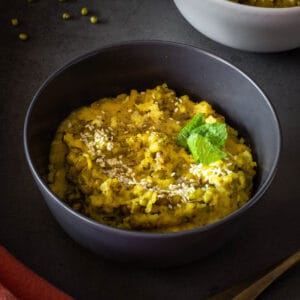
Vegan Kitchari Recipe
Equipment
Ingredients
- ½ cup moong beans whole green, yellow split, or red lentils
- ½ cup basmati rice or brown basmati
- 2 teaspoons ginger fresh, minced, or powdered
- 1 tablespoon sesame oil or ghee (vegetarian)
- ¼ teaspoon cumin seeds
- ¼ teaspoon coriander ground
- ¼ teaspoon turmeric ground
- ⅛ teaspoon black pepper
- 6 cups water
Optional:
- ½ teaspoon sea salt
- ½ cup rolled oats gluten-free
- ¼ teaspoon fenugreek ground
- ¼ teaspoon fennel seeds
- Mint
Directions
- Soak. In a medium bowl, add the rice and mung beans and pour water until it is covered. Let it soak for 15 minutes. Then pour the mixture into a strainer and rinse with water until it runs clear.
- Mince the fresh ginger.
- Briefly cook spices. Warm the sesame oil on medium-low heat in a medium or large pot. Then add the cumin seeds and let them cook for about a minute until they start to become fragrant and brown and become fragrant. Then add the ginger, ground coriander, turmeric, black pepper while stirring.
- Cook everything in the same pot. Add the rice and mung beans into the pot and optionally season with salt. Stir and add 6 cups of water. Optionally add oats.
- Simmer. Increase the heat to medium-high, bringing the mixture to a boil. Then turn the heat down to a gentle simmer. Let it cook for 30 minutes, uncovered, while occasionally stirring until you get a creamy consistency. It should be soft and creamy.
- Adjust. Taste the kitchari to ensure the texture is soft. If not, you may need to cook it a little longer. Feel free to add water if required.
- Serve. You can serve it immediately with coriander leaves or cool down completely to store in the fridge.
Video
Nutrition Facts
Nutritional Disclaimer
The information shown is an estimate provided by an online nutrition calculator. It should not be considered a substitute for a professional nutritionist's advice. See our full Nutritional Disclosure here.
Affiliate Disclaimer
Please note that some of the links here are affiliate links, and I will earn a commission if you purchase through those links. I recommend all of the products listed because they are companies I have found helpful and trustworthy.
As the lead content writer and recipe developer at Our Plant-Based World, he combines his passion for health and sustainability with a Plant-Based Nutrition Certification to create accessible, delicious vegan recipes. His expertise in plant-based cooking supports the blog's mission of fostering a healthier, environmentally conscious lifestyle through simple and seasonal dishes. His commitment to making vegan cooking enjoyable and inclusive for everyone shines in each recipe and article.

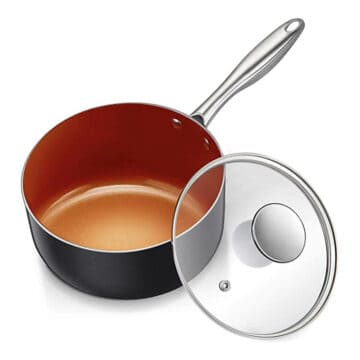
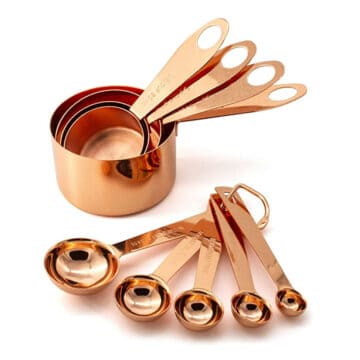

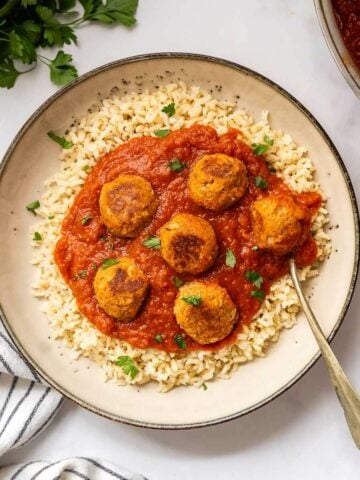
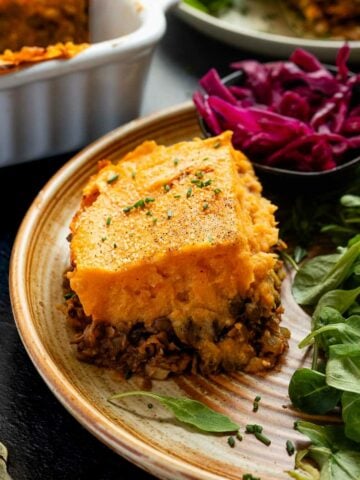
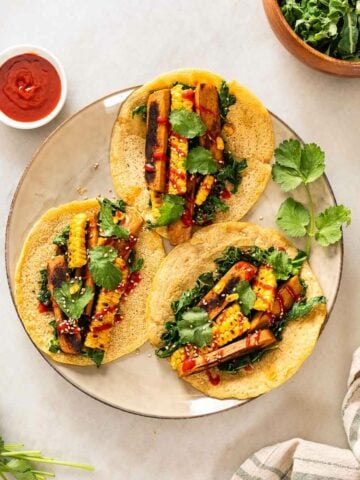
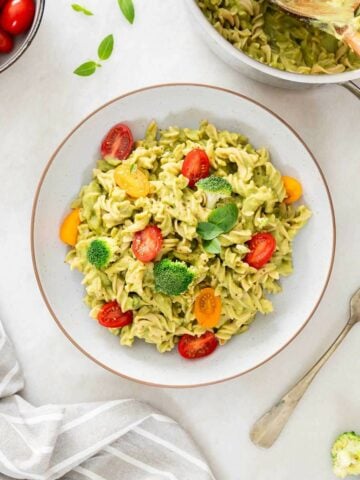
Alison
This was delicious! I added a lot of black pepper for some kick. Great recipe, easy to follow and easy to make!
Gus
That sounds like a great idea! Freshly ground pepper can work wonders!
Sara Welch
I always love a good cleanse and this was no exception! So easy and healthy; so glad I gave it a try!
Beth
Delicious and healthy! I love anything with turmeric in it. I can always count on you guys to keep me on the straight and narrow food path.
Pam
What a lot of great information along with this recipe. Thanks so much for sharing!
Liz
I'd never tried kitchari before so I was glad to find this recipe! Thakns for making it easy to follow. So yummy!
Marlynn
Love the flavors of this dish! We use a lot of the same ingredients - mung beans, rice, ginger - in Filipino cooking, so it's a great recipe to make with ingredients I already have on hand!
Angela
What an incredible recipe! The spices in here are amazing. Thanks for researching and sharing!
Gina
One of my favorite ways to use mung beans! Kitchari has been a long time staple in our house, love this easy recipe for it!
Shadi Hasanzadenemati
Love how easy this recipe is. It’s perfect for our family!
Beth Sachs
I've never heard of kichari cleansing. Very informative article!
Gus
It is definitely one of the best ways to restore gut health.
Toni
This is so delish and healthy! A new favorite at my house!
Gus
After a week of detox, it became a staple in our kitchen. So healthy and nurturing!
Jenn
The flavors and spices in this dish are on point and I love that's it's such a tasty vegan recipe! Yum!
Gus
Indeed, Indian spices are great for elevating simple dishes, even detox ones!